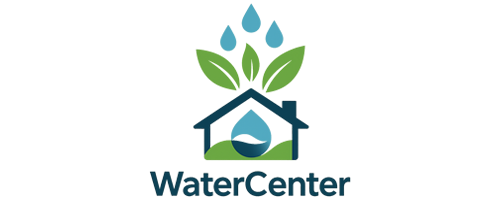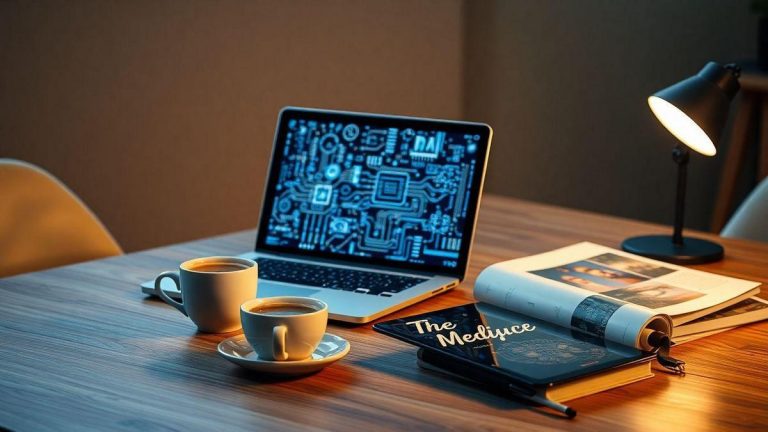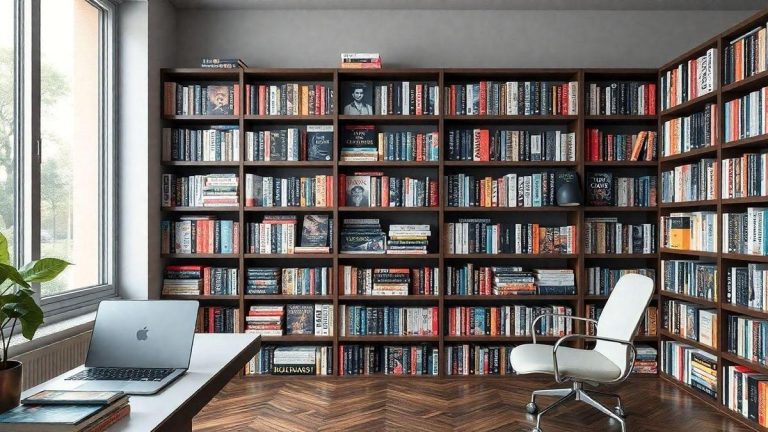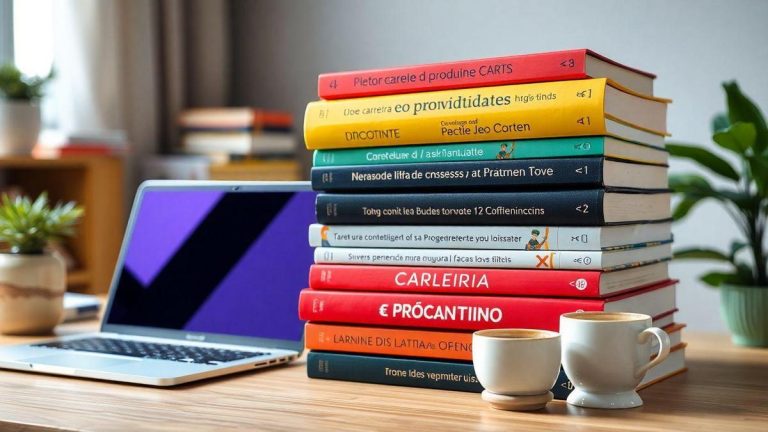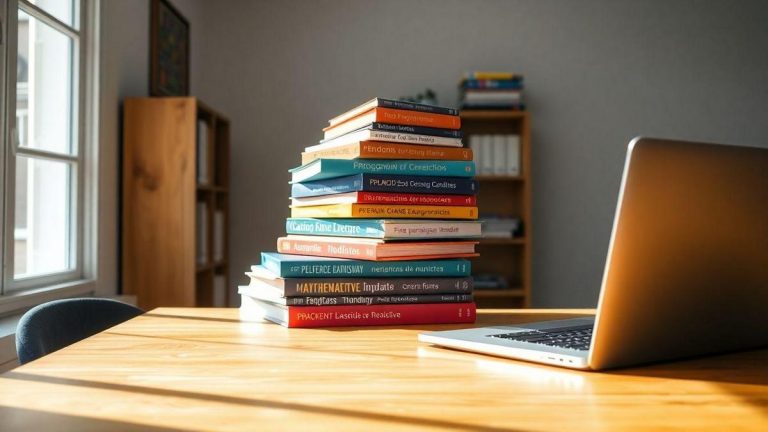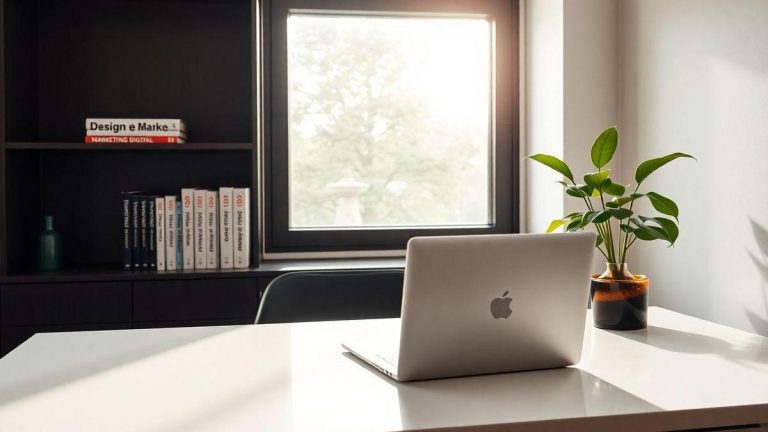How I Do My Technical Readings to Get the Most Out of Them
How I Do My Technical Readings to Get the Most Out of Them is something I managed to turn into a real adventure! Since reading a technical text can be as fun as watching paint dry, I decided to apply some tactics hilarious and strategies brilliant. Come with me on this tour through my world of notes chaotic, but organized, summaries that seem to have come out of a comedy film and infallible tips to avoid sleep while reading! After all, if I can do it, you can too!
My Study Techniques for Technical Readings
How I Make My Technical Readings Fun
When the subject is technical reading, the first thing that comes to mind is a bunch of boring and complicated texts. But, calm down! I discovered that it is possible to transform this into a real adventure. How? Simple!
First, I created a cinema atmosphere When reading, I put on some background music, as if I were watching an action movie. This helps maintain attention. And, of course, who doesn't like a little drama in life?
Plus, I take colorful notes. Yes, I'm that student who looks like he just stepped out of a craft store. Using colored pens, I mark important parts and make little drawings. This not only makes everything look nicer but also helps memorize the information.
What I Learned About Improving Comprehension
One of the coolest things I've noticed is that when reading is fun, understanding increases. It's as if the brain is more open to absorbing information. When I read with a smile on my face, the words seem to dance on the page and fit together like puzzle pieces.
Here are some tips I've learned:
| Tip | Description |
|---|---|
| Abstracts | Make summaries in your own words. |
| Discussions | Discuss what you read with friends. |
| Exercises | Try to apply what you learned to practical projects. |
Tips for Turning Technical Readings into Adventures
- Create a cool environment: Choose a comfortable place that inspires you. It could be a cafe, a park, or even your bedroom, but with a special touch (a scented candle, perhaps?).
- Challenge yourself: Try explaining what you read to someone who doesn't understand the subject at all. This will force you to truly understand the content.
- Use technology to your advantage: There are apps that convert text into audio. Put on headphones and listen while doing something else. It's like having a private tutor in your pocket!
- Divide the content: Don't try to read it all at once. Break it down into smaller chunks. This way, you can take breaks and avoid mental fatigue.
- Reward yourself: After finishing a chapter or section, do something you enjoy. This will motivate you to continue.
The Art of Effective Note-Taking
My Notes: Organized Chaos
Ah, my notes! If someone asked me what they looked like, I would say it was a organized chaosImagine a whirlwind of ideas and scribbles, where each page is a new adventure. There are drawings, arrows, and even some figures that only I understand. The truth is, I believe that each note should have a little bit of my own. personalityAfter all, who said taking notes has to be boring?
I use a notebook for class and an app on my phone. That's right, I'm a real warrior of digital and analog note-taking! When I'm in class, I write down everything the teacher says, but I also add funny comments. This helps me remember, because, let's be honest, who doesn't like to laugh while studying?
How I Do My Technical Readings and Take Notes at the Same Time
Now, let's talk about how I do my technical reading to get the most out of it. When I pick up a book or article, I prepare as if it were a reading champion. I put a coffee next to it, a snack and, of course, my favorite pen.
Here's what I do:
- I read an excerpt.
- I write down what I understood.
- I ask questions.
- I draw diagrams.
Yes, I draw! Sometimes a picture is worth a thousand words, and a doodle can remind me of something important. For me, this is like a party of ideas in my head.
The Secret to Taking Notes That Actually Work
The secret to notes that really work is simplicityIt doesn't have to be a work of art, but it should be clear. Here's a table I use to organize my thoughts:
| Theme | Notes | Doubts |
|---|---|---|
| Schedule | Data structures, algorithms | How to apply it in practice? |
| Digital Media | SEO, digital marketing | What tools to use? |
| Data Analysis | Statistics, visualization | How to interpret the data? |
With this chart, I can quickly see what I've learned and what I still need to explore. It's like having a treasure map, where each note is a clue to the next big find!
Summaries and Reviews: My Memorization Strategy
How I Do My Technical Readings and Create Brilliant Summaries
When it comes to technical reading, I have a trick up my sleeve. First, I pick up the book or article and skim it. I'm not a robot, so I don't read it word for word like I'm on a secret mission. Instead, I look for the keywords and the main ideas. It's like fishing: I cast the line and hope to catch the best fish!
After that, I write a summary. And no, it's not a boring summary! I use colors and designsFor me, a summary without color is like flavorless ice cream. I even use emojis! Who said technical reading can't be fun?
Here's an example of how I do my summaries:
| Main Topic | Key Ideas | Emojis |
|---|---|---|
| Algorithms | Data Structures | 🧠 |
| Schedule | Logic and Syntax | 💻 |
| Development | Frontend and Backend | 🌐 |
Is Reviewing Boring? Not Me!
Reviewing is like going to the dentist: no one likes it, but it's necessary. However, I put a little fun That's it! I created a review game. Every time I review a summary, I give myself points. If I manage to remember everything, I get a reward, like a piece of chocolate. 🍫
The truth is, if you make reviewing a challenge, it stops being boring. And who doesn't like a challenge? It's like a race: you push yourself, but in the end, the feeling of victory is incredible!
The Magic Formula for Effective Summaries
The magic formula for effective summaries is simple: Clarity Brevity Creativity. Just look:
- Clarity: Use short, direct sentences. Avoid complicated words.
- Brevity: Summarize it in one sentence, if possible. You don't need to write a book!
- Creativity: Use colors, drawings, and even memes! This makes the information stick in your head.
With this formula, I can make summaries that not only help with memorization, but they're also fun to read. And who doesn't want to learn in a fun way?
Time Management: My Best Friend in Reading
How I Do My Technical Readings Without Going Crazy
Ah, technical reading! For many, it's like trying to understand an instruction manual for a Swedish piece of furniture. But for me, it's an adventure! I've discovered that to avoid going crazy, I need a plan. My strategy? Divide and conquer! Instead of tackling a whole book at once, I take bites. It's like eating a pizza: you don't swallow it all at once, right?
I like to create a list of topics I want to cover. This way, I can focus on one area at a time. It helps keep my mind on track and prevents me from feeling like I'm drowning in a sea of information.
My Reading Schedule That Works
Let's talk about schedulesI'm a fan of schedules. They're like GPS for my reading. If I don't have one, it's like driving without knowing where I'm going. Here's my reading schedule, which, believe it or not, actually works:
| Day of the week | Time | Topic to Read |
|---|---|---|
| Second | 7pm – 8pm | Basic JavaScript |
| Third | 7pm – 8pm | HTML and CSS |
| Fourth | 7pm – 8pm | Python for Beginners |
| Fifth | 7pm – 8pm | Frontend Frameworks |
| Friday | 7pm – 8pm | Practical Projects |
| Saturday | 3pm – 5pm | Review and Practice |
This schedule is like a reading buffet! I choose what I want to "taste" each day. And the best part? I still have time for Netflix and snacks!
Time Management Tips I Learned the Hard Way
Now, let's get to the tips I learned in practice, or as I like to call them: the lessons of the battlefield! Here are some that might help you:
- Use a Timer: I set a timer for 25 minutes. That's my reading time. Then I take a 5-minute break. Has anyone heard of the Pomodoro method?
- Disconnect: Put your phone on airplane mode. The last thing you need is a cat making a TikTok video in the middle of your technical lecture.
- Notes: I always have a notebook by my side. Writing down what I learn helps me retain the information. And, who knows, maybe one day I'll publish a bestseller!
- Quick Review: At the end of the week, I review everything I've read. It's like reviewing the material before a test, only without the pressure.
Now, I can guarantee you: How I Do My Technical Readings to Get the Most Out of Them It's not just a motto, it's a lifestyle!
Active Reading: How to Avoid Falling Asleep in Class
My Tactics for Maintaining Attention
Ah, class! This magical place where I learn incredible things and sometimes find myself daydreaming about my bed. To prevent this from happening, I use some tactics that are almost like superpowers. Here they are:
- Colored Notes: Yes, I'm that student who looks like he just stepped out of a craft store. Colorful pens, Post-its, and even stickers! It helps me keep my mind active and keep the pen from slipping while I dream about pizza.
- Questions and Answers: During class, I ask myself questions. Like, "What did the teacher mean by that?" or "How does this apply to my programming project?" It keeps me engaged and keeps me from thinking about the life of my favorite TV character.
- Change of PositionIf I feel like I'm starting to go into snooze mode, I change my position. I sit forward, or even get up to get a drink of water. A little movement, and I'm back to reality!
How I Do My Technical Readings and Stay Connected
Now, when it comes to technical reading, things can get a little boring. But I've found a few ways to make it more fun! Here are some tips I use:
- Split Text: Instead of tackling a giant text, I break it down into smaller chunks. This way, it feels easier and less daunting. It's like eating a cake in bite-sized pieces instead of trying to swallow it whole!
- Reading Aloud: I speak the texts out loud. It might sound a little crazy, but it helps me retain the information better. And if anyone hears me, they'll at least think I'm a studious genius!
- Visual Summaries: I enjoy making mind maps. You know those drawings that look more confusing than a maze? They help you visualize information and better understand the content. Plus, it's a great excuse to draw!
The Power of Active Reading in Comprehension
Active reading is like having a superpower that helps me better understand the content. When I truly engage with what I'm reading, the information becomes clearer and easier to remember. It's like playing a video game, and with each level I advance, I learn more and more.
And if I don't, well... it's like trying to remember the name of a movie I watched years ago. A true mission impossible!
Critical Analysis: What I Really Think
How I Do My Technical Readings and Evaluate the Content
When it comes to technical readingsI'm like a curious cat. I look at everything, but always with a wary eye. First, I look for sources that seem trustworthy. I don't want to fall into the trap of reading something that seems more like a joke than useful information. So, I do a quick search, as if I were investigating a crime.
Then I read it carefully. But that's not all! I jot down the parts that catch my attention, like those phrases that scream "take me seriously!" and, of course, the ones that make my brain spin. This helps me filter what really matters and form my own opinion.
What I Learned About Critical Analysis from Readings
Critical analysis is like a superpower I've gained. I've learned that I can't just swallow everything I read. Sometimes I come across information that seems good but has more holes than Swiss cheese. I ask myself, "Is this information true? Who wrote it? What's its purpose?"
Here are some things I learned:
| Tip | Description |
|---|---|
| Always question | Don't accept everything at first, ask questions! |
| Search multiple sources | Compare different opinions to get a clearer picture. |
| Write down your impressions | Writing helps you to remember what you have learned. |
Tips for Developing a Critical Mind
If you want to be a master of critical analysis, here are some tips that worked for me:
- Read with a critical eye: Don't be a robot who accepts everything. Ask yourself if it makes sense.
- Talk to other people: Discussing ideas can open your mind.
- Practice reflection: Think about what you read and how it applies to your life.
Now if you ask me How I Do My Technical Readings to Get the Most Out of Them, the answer is simple: I get involved, I question and, most importantly, I have fun in the process!

